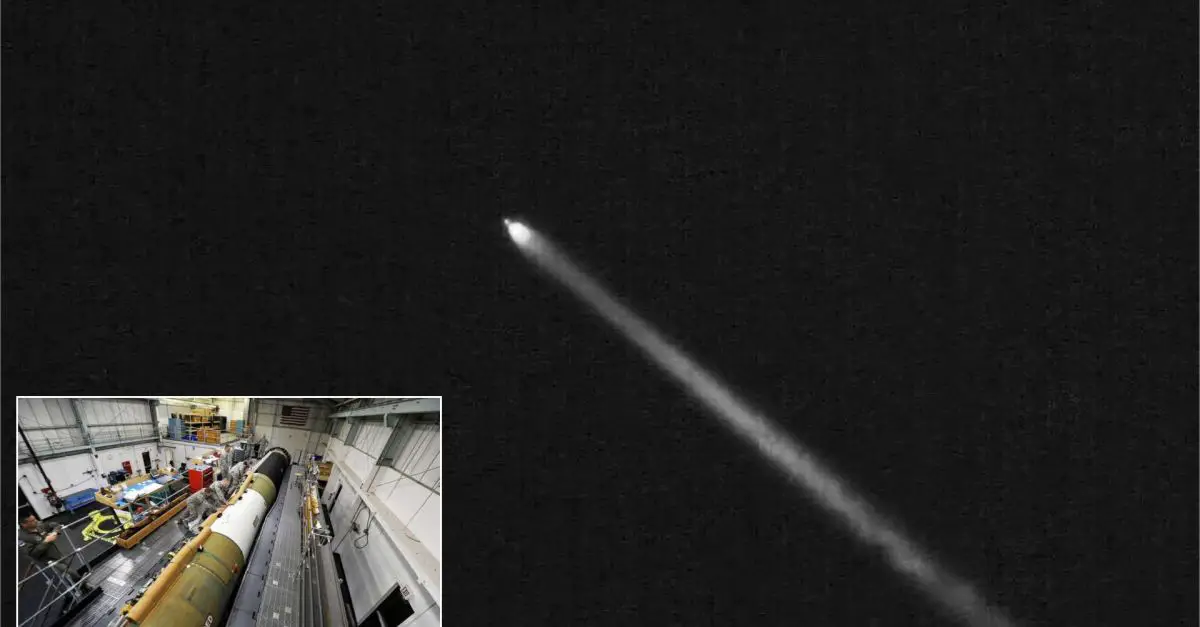Breaking news
US Successfully Tests Unarmed Minuteman III ICBM InterContinental Ballistic Missile.
Early this morning, the United States successfully launched an unarmed Minuteman III intercontinental ballistic missile (ICBM) from Vandenberg Space Force Base in California. The launch, conducted at 12:56 a.m. Pacific Time, was a coordinated effort by Air Force Global Strike Command Airmen and Space Force Guardians.
Follow Army Recognition on Google News at this link

A joint team of U.S. Air Force Global Strike Command Airmen supported by Space Force Guardians launched an unarmed Minuteman III intercontinental ballistic missile equipped with one re-entry vehicle on June 4, 2024, at 12:56 a.m. (Picture source: U.S. DoD)
This routine test is part of ongoing efforts to ensure the reliability and effectiveness of the U.S. nuclear deterrent. The Minuteman III ICBM, equipped with one re-entry vehicle, flew to a designated target in the Pacific Ocean, demonstrating the missile's capabilities. Officials stressed that this test, the latest in a series of over 300 similar launches, was scheduled well in advance and is not connected to any current global events.
"The successful launch today reaffirms our ability to maintain a credible nuclear deterrent," said Col. Kris Barcomb, Space Launch Delta 30 vice commander. "Routine testing ensures that our systems remain safe, secure, and effective in deterring threats."
The Minuteman III, a critical component of the U.S. strategic arsenal since the 1960s, plays a vital role in national defense. It is part of the nuclear triad, which includes submarine-launched ballistic missiles and strategic bombers, ensuring a flexible and robust response capability.
The Minuteman III is an intercontinental ballistic missile (ICBM) that has been a key component of the United States' strategic arsenal since it entered service in 1970. Its primary combat role is to serve as a strategic nuclear deterrent, ensuring that the U.S. has the capability to respond with overwhelming force to any nuclear attack. This deterrent effect is crucial for maintaining global stability and preventing nuclear conflict. Additionally, the Minuteman III is designed to provide a credible second-strike capability, meaning it can launch a retaliatory nuclear strike even after a devastating first strike by an adversary. This ensures that the U.S. retains the ability to inflict significant damage in the event of an attack, thereby deterring potential aggressors.
The Minuteman III also has potential applications in the realm of prompt global strike, where it could be adapted for conventional roles to deliver precision strikes anywhere in the world within a short time frame. This versatility underscores its strategic importance beyond its nuclear deterrence role.
Key features of the Minuteman III include its three-stage solid-fuel rocket motor system, which provides rapid launch capability and an operational range of approximately 13,000 kilometers (8,100 miles). Its advanced guidance systems allow for high accuracy, ensuring that it can effectively reach its targets. The missile was originally equipped with Multiple Independently Targetable Reentry Vehicles (MIRVs), allowing it to carry up to three nuclear warheads, each capable of hitting different targets. However, modern arms reduction treaties have reduced this capacity.
The Minuteman III has undergone several upgrades over the years, particularly to its guidance and control systems, to maintain its effectiveness and reliability as a strategic deterrent. As of recent reports, the U.S. maintains a fleet of approximately 400 Minuteman III missiles, all based in underground silos across several states, ensuring a robust and ready deterrent force.
This latest test underscores the ongoing commitment of the United States to maintaining a powerful and reliable nuclear deterrent, providing assurance to allies and a clear message to potential adversaries about the nation's readiness and resolve.


























